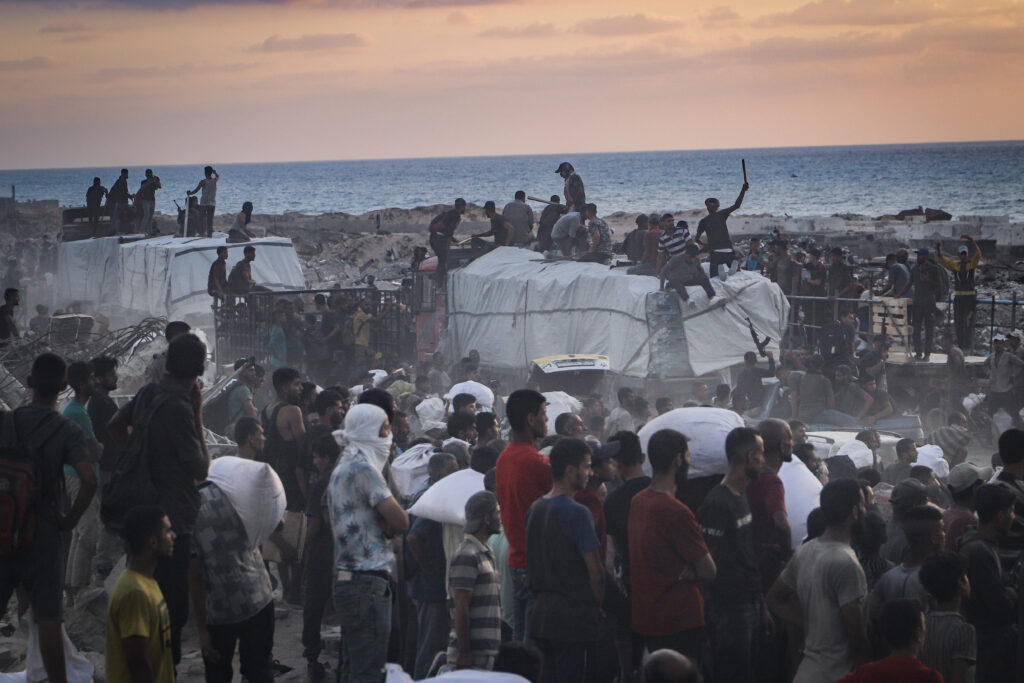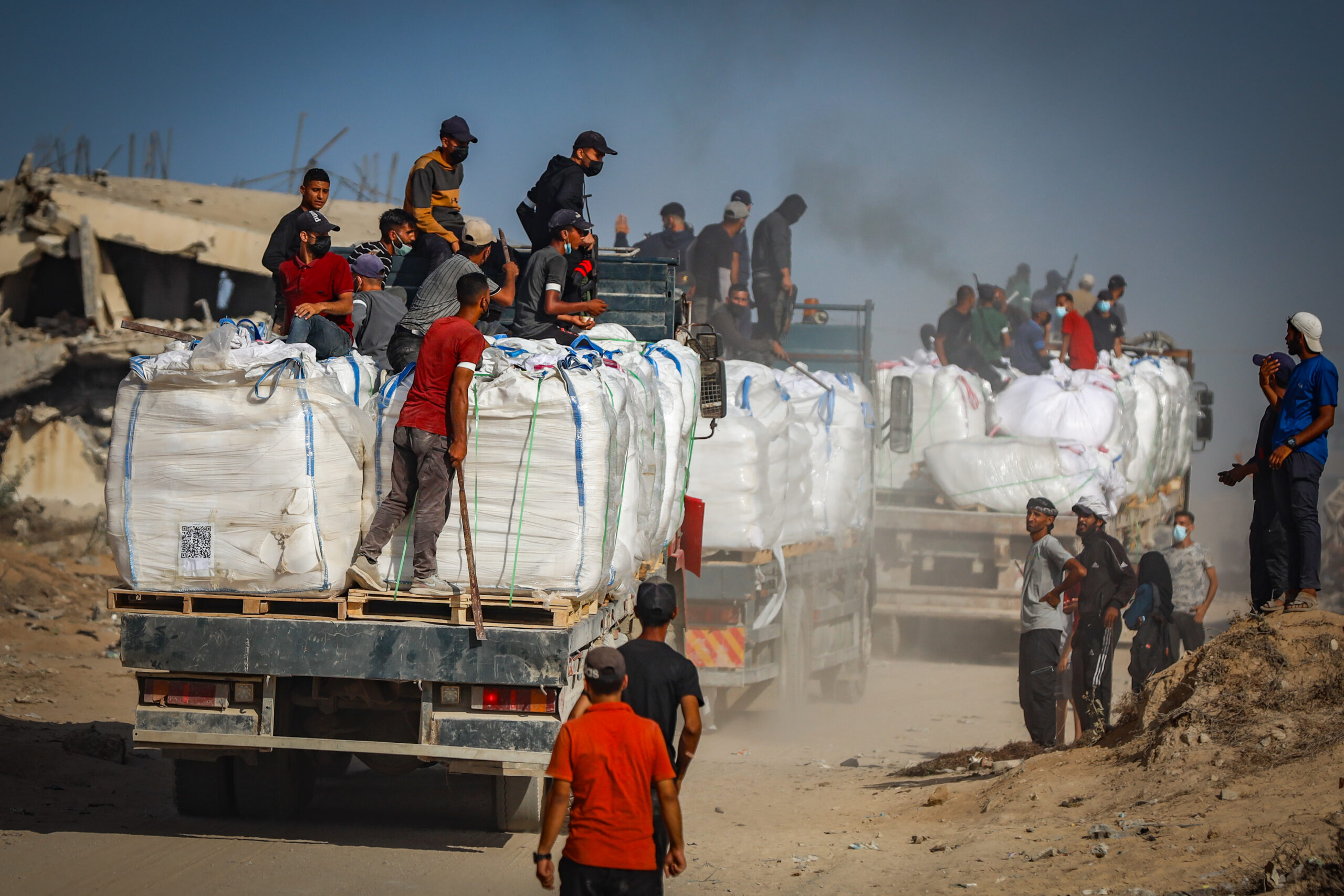A startling discrepancy has emerged between Israeli and United Nations reporting on humanitarian aid deliveries to Gaza, with Israeli authorities revealing that out of 9,200 trucks let into Gaza since May, the U.N. documented only 3,553. This represents a staggering undercount of nearly 6,000 trucks—more than 60% of actual deliveries going unreported by the UN.
The UN proves yet another week it can step up collection efforts.
— COGAT (@cogatonline) August 17, 2025
But the UN isn’t the only actor. Other organizations and countries send in the majority of aid.
There’s no quantitative limit to the number of trucks. The UN just has to bring in all the trucks they say they… pic.twitter.com/UgNvLxiYqb
The Coordinator of Government Activities in the Territories (COGAT) has accused the UN of systematically misrepresenting the humanitarian situation through incomplete data collection. Officials warn the discrepancy distorts the humanitarian picture and misleads world leaders.
Israeli officials contend that the UN’s reporting methodology is fundamentally flawed and deliberately misleading. “The UN’s incorrect numbers are a result of their flawed counting method. Rather than counting the actual number of trucks that enter the Gaza Strip, in an attempt to conceal their logistical distribution difficulties, they only count the trucks that they have picked up from the Gazan side”, according to COGAT.
180 food aid packages for the residents of Gaza were airdropped in coordination with the UAE, Jordan, Germany, Belgium, France, Italy, the Netherlands, Denmark and Indonesia. pic.twitter.com/h5sXVXmXfV
— COGAT (@cogatonline) August 18, 2025
“The fact that the UN only presents a portion of the aid actually delivered misleads the international community and creates a false picture of the humanitarian situation,” COGAT said in a statement. Israeli officials argue that the UN only counts shipments it manages directly, ignoring substantial aid delivered through other channels.
The UN’s tracking system systematically excludes various forms of humanitarian assistance. The dashboard fails to include aid delivered by other actors in the humanitarian system, including various states, additional international organizations, the private sector, airdrops, and the distribution centers of the American company, the Gaza Humanitarian Foundation.
This selective counting creates a distorted narrative about Israel’s humanitarian efforts. In May, COGAT reported 6,359 trucks, but the UN only collected and distributed aid from 1,479 trucks – about a quarter of the trucks Israel sent in. Therefore, the international community accused Israel of not delivering enough aid that month.
This TikTok account called "The Gazan" quotes the number of trucks entering Gaza just from the northern Zikim border crossing today 19 Aug '25:
— Imshin (@imshin) August 19, 2025
54 WFP (UN) free aid trucks
20 Emirati free aid trucks
17 private commercial trucks
How much of this will be distributed free to… pic.twitter.com/HMuHMmmB27
The consequences of this misreporting extend far beyond statistics. Israel’s reported figures are met with skepticism worldwide and even ignored by ICJ judges. An analysis of the discrepancies in the data reveals that it is the UN figures that are inaccurate and misleading.
This has created a situation where accurate Israeli data is dismissed while incomplete UN figures are accepted as authoritative, fundamentally skewing international understanding of the humanitarian situation.
The reporting discrepancy is compounded by systematic theft of humanitarian aid once it enters Gaza. Palestinian Authority President Mahmoud Abbas has confirmed what Israeli intelligence has long reported: Palestinian Authority President Mahmoud Abbas blamed Hamas-affiliated gangs for being “primarily responsible” for the looting.
Abbas warned that the gangs were “well known to the Palestinian public” and would “top the blacklist to be held accountable and brought to justice in accordance with the law at the appropriate time”. This represents a rare acknowledgment from Palestinian leadership of the theft problem.
The scale of aid theft is staggering. Hamas has looted at least 60% of the aid that Israel allowed to enter Gaza, the Israel Security Agency (Shin Bet) revealed last year. Recent video evidence confirms the systematic nature of this theft, with terrorists openly boarding trucks, stealing supplies, and intimidating local distributors.
The theft has become so brazen that armed gangs attacked a convoy of more than 100 trucks of United Nations food aid, in what was described as the biggest looting incident in recent memory.
The UN has been forced to acknowledge the theft problem, but it continues to deflect responsibility. The UN has acknowledged that its convoys have been plagued by looting, but has blamed armed gangs rather than Hamas and has insisted that the solution is for Israel to allow much more aid into Gaza so that demand decreases.
This response ignores the fundamental problem: aid is being systematically stolen regardless of volume. Recent reports show that only 37 trucks of aid on average a day entered Gaza from Israel last month – the lowest since the war began. And much of that aid’s being stolen by gangs.
The combination of UN underreporting and systematic theft has created a perfect storm of misinformation. World leaders are making decisions based on incomplete UN data that excludes thousands of aid deliveries, while the aid that does get counted is often stolen before reaching civilians.
COGAT’s recent revelation that the UN has improved collection rates must be viewed in this context. While Israel allowed nearly 9,200 aid trucks into Gaza since May, more than 2.5 times the number reported by UN, the actual impact on Gaza’s population remains limited due to systematic theft.
The aid reporting scandal reveals a deeper institutional failure within the UN system. Rather than providing accurate information to guide international humanitarian policy, the organization’s flawed methodology has created a false narrative that hampers effective aid delivery and misleads global decision-makers.

This pattern extends beyond simple counting errors. The UN’s apparent reluctance to acknowledge the full scope of aid deliveries, combined with its inability to prevent systematic theft, raises serious questions about its effectiveness as a humanitarian coordinator in conflict zones.
The revelation that the UN has underreported Gaza aid deliveries by nearly 6,000 trucks since May exposes a crisis of credibility in international humanitarian reporting. When combined with confirmed reports that Hamas-affiliated gangs are stealing at least 60% of delivered aid, it becomes clear that the international community has been operating with fundamentally flawed information.
Until the UN adopts transparent, comprehensive counting methods and addresses the systematic theft problem, efforts to provide humanitarian assistance to Gaza’s civilian population will continue to be undermined. The current system not only fails Gaza’s people but also misleads the international community about the true nature of the humanitarian crisis and Israel’s substantial efforts to address it.




